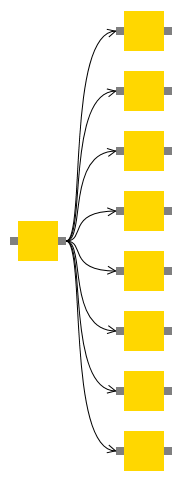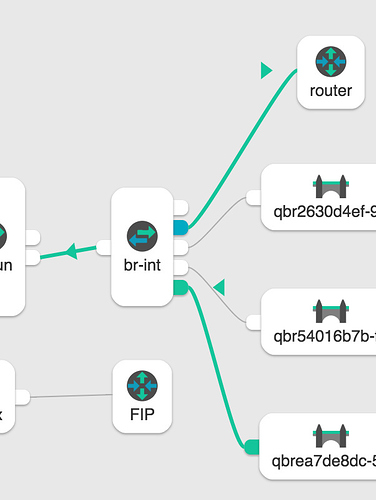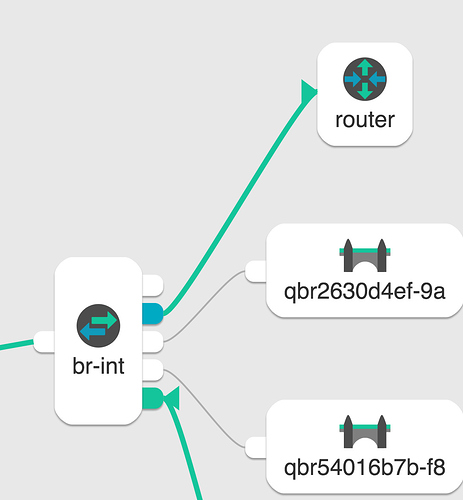OK, here’s what I’ve tried to customize the angle of the arrowhead based on a guess of what might be appropriate for a particular combination of EndSegmentLengths for Bezier-curve Link routes, assuming links go basically horizontally from left to right.
function init() {
var $ = go.GraphObject.make;
myDiagram =
$(go.Diagram, "myDiagramDiv",
{
initialContentAlignment: go.Spot.Center,
layout: $(go.TreeLayout, { setsPortSpot: false, setsChildPortSpot: false }),
"undoManager.isEnabled": true
});
myDiagram.nodeTemplate =
$(go.Node, "Horizontal",
$(go.Shape, { portId: "in", width: 8, height: 8, fill: "gray", strokeWidth: 0 }),
$(go.Shape, { width: 40, height: 40, fill: "gold", strokeWidth: 0 }),
$(go.Shape, { portId: "out", width: 8, height: 8, fill: "gray", strokeWidth: 0 })
);
myDiagram.linkTemplate =
$(go.Link,
{
curve: go.Link.Bezier,
fromPortId: "out",
fromSpot: go.Spot.Right,
fromEndSegmentLength: 20,
toPortId: "in",
toSpot: go.Spot.Left,
toEndSegmentLength: 50
},
$(go.Shape),
$(go.Shape,
{ toArrow: "OpenTriangle", segmentOrientation: go.Link.None },
new go.Binding("angle", "points", function(pts) {
var y0 = pts.first().y;
var y1 = pts.last().y;
return Math.sqrt(Math.abs(y1-y0)) * ((y1 > y0) ? 1 : -1);
}).ofObject())
);
myDiagram.model =
$(go.GraphLinksModel,
{
archetypeNodeData: {},
linkDataArray: [
{ from: 1, to: 2 },
{ from: 1, to: 3 },
{ from: 1, to: 4 },
{ from: 1, to: 5 },
{ from: 1, to: 6 },
{ from: 1, to: 7 },
{ from: 1, to: 8 },
{ from: 1, to: 9 }
]
});
}
The results:

You can fiddle with the GraphObject.angle calculation for the arrowheads based on your configuration. It should depend on not only the fromEndSegmentLength and toEndSegmentLength but on the size of the arrowhead Shape and the distance and direction between the two ports.
This example calculation, as you can see, only depends on the vertical distance, which means you still get bad results if you move the “to” Node much to the left of the “from” Node.


